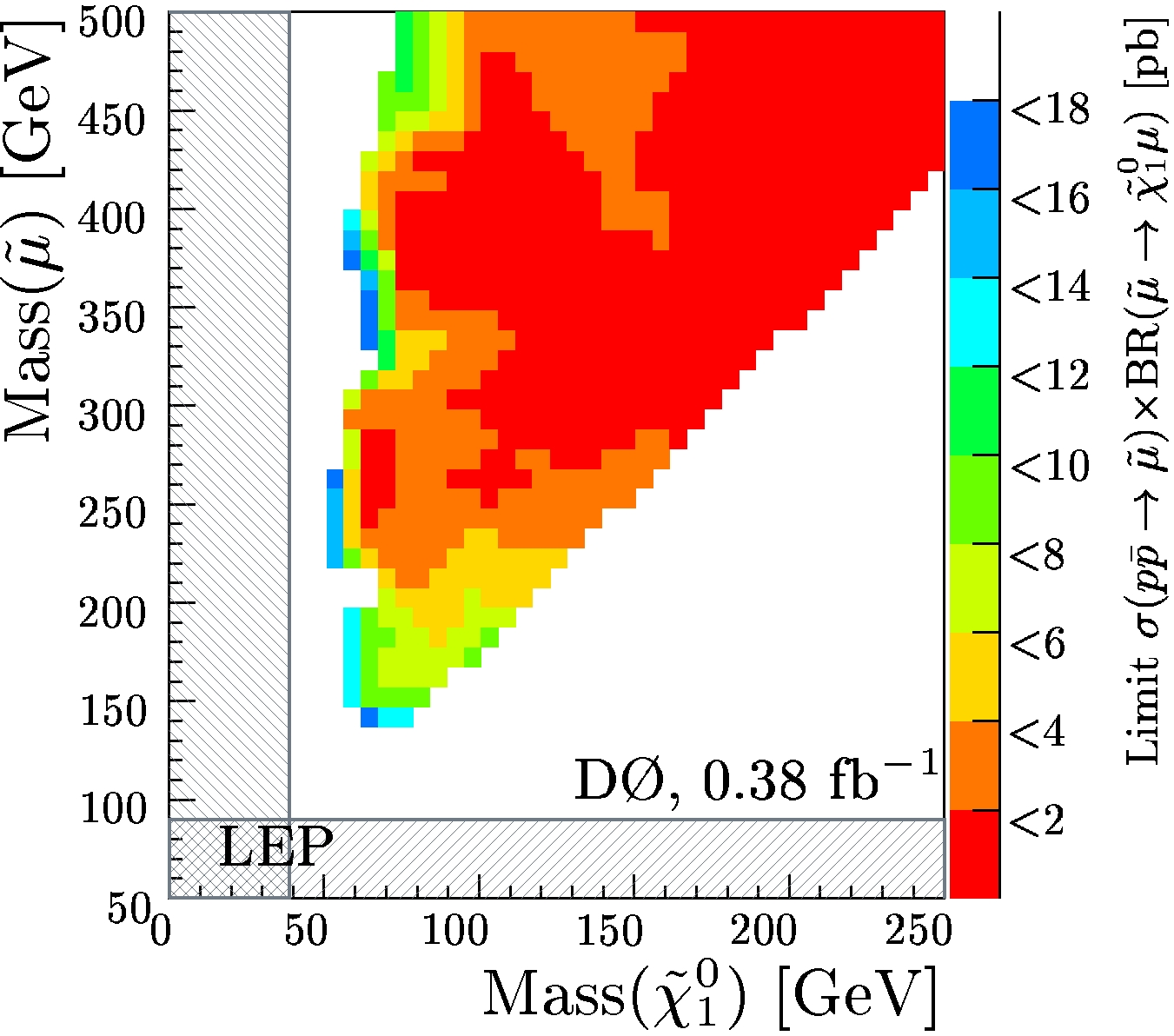An important goal of particle physics is to describe the elementary constituents of matter, and the forces which govern them, with a simple Unified Theory . Supersymmetry, often called SUSY, is a promising theory that may offer this unification.
SUSY predicts a new partner for each known particle with similar properties but different spin. For example, the smuon would be the partner of the muon μ, the charged lepton of the second generation (or familiy) of matter particles. While muons have a spin of 1/2, smuons carry no angular momentum. Similarly, sneutrinos are the predicted partners of the neutrinos , electrically neutral particles with a small mass. The generic name 'slepton' is used to denote the spinless partners of the known leptons, namely electrons, muons, tauons and the corresponding three neutrinos. So far no SUSY-particle has been discovered. Therefore we do not know yet if SUSY is a good description of nature. Thus the search for SUSY-particles is of high relevance, and many experiments all over the world try to find them.
Different SUSY models have been proposed,
some of them allow a quark and an antiquark to annihilate such that
their total energy is transformed into a single SUSY-particle,
for example a smuon
![]() or a sneutrino
or a sneutrino
![]() .
The production probability is highest when the (anti)quark energies
match
the mass of the SUSY-particle,
therefore
particle physicists call this process 'resonant'.
Since quarks (antiquarks) are the constituents of protons (antiprotons),
SUSY particles can be produced in proton-antiproton collisions at
the Tevatron - if they are not too heavy.
Smuons and Sneutrinos are unstable
and decay after a fraction of a microsecond, for example the smuon
could disintegrate into
a muon and a
neutralino
.
The production probability is highest when the (anti)quark energies
match
the mass of the SUSY-particle,
therefore
particle physicists call this process 'resonant'.
Since quarks (antiquarks) are the constituents of protons (antiprotons),
SUSY particles can be produced in proton-antiproton collisions at
the Tevatron - if they are not too heavy.
Smuons and Sneutrinos are unstable
and decay after a fraction of a microsecond, for example the smuon
could disintegrate into
a muon and a
neutralino
![]() , see graph below.
, see graph below.

The D0 detector is well suited to measure the direction and energy of muons and jets. Since the Tevatron collider provides a very high collision energy of nearly 2000 GeV, this experiment has a good chance to detect sleptons - if they exist and if they are not too heavy. However, not all proton-antiproton interactions with a final state consisting of two muons and two jets can be attributed to smuon production. 'Background' processes can fake the production of SUSY particles, for example the reaction proton+antiproton → Z plus two jets with the Z decaying into two muons.

Fortunately we can calculate and measure the contribution of the background processes and subtract it from the data sample measured. We find, that in particular for the sample with two muons and two jets the difference between measurement and background vanishes, that is, there is no indication for SUSY. Note that the difference is not exactly zero, since the number of collision events, which are due to quantum processes, obtained in a certain measuring period (in this case about 2 years) fluctuates. These statistical effects have to be taken into account in quantifying the non-observation of sleptons. The figure below displays the exclusion limits for smuons, that is an upper bound on the cross section (and subsequent decay) for the slepton production.

D0 will continue to search for evidence of SUSY in the new data coming in, and will be able to probe new SUSY territory.
If you have any questions about this analysis, please contact the primary authors.